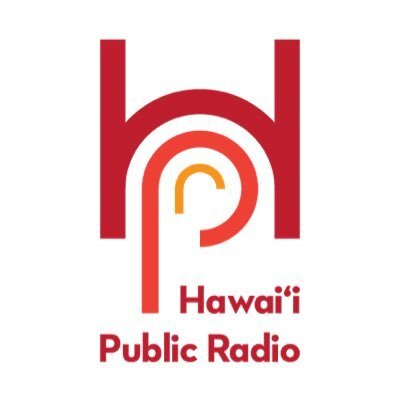
In new exhibit, Hawaiians embrace rich history of being māhū
ABC News’ Kyra Phillips reports on a new museum exhibit in Honolulu that seeks to reacquaint Hawaiians with an ancient tribute to the gender-fluid ways of being māhū.

Convention Center Unveils Hawaiian Cultural Exhibits
The Hawai‘i Convention Center unveiled two new Hawaiian cultural exhibits Thursday, one featuring a collection of traditionally crafted Hawaiian featherwork pieces, and an exhibit featuring a replica of the Healer Stones of Kapaemahu. The “Healer Stones of Kapaemahu” exhibit, which was previously featured in a five-month exhibition at the Bishop Museum, includes a replica of an existing stone monument in Waikiki, adjacent to the district’s Honolulu Police Department.

Kapaemahu Wins Stonewall Book Award
Hinaleimoana Wong-Kalu, or Kumu Hina for many, is known for work in the art of Hula. She is a filmmaker, an artist, and an activist and now an author after the release of her book “Kapaemāhū”. The book tells the traditional story of four legendary mahu or individuals with dual male and female spirit, who long ago brought healing arts from Tahiti to Hawaiʻi and imbued their healing powers into four large stones in Waikiki today. The book is written in both English and in ʻōlelo Niʻihau.

“Thoughtful, informative, monumental” - Bulletin of the Center for Children’s Books
Drawn from script and artwork of Kapaemahu, the 2020 animated short by the same name, this dual text retelling of a traditional tale explains the origins of a group of sacred stones buried beneath the tourist development of Waikiki.
Daniel Sousa’s illustrations portray the healers as chiseled, monumental forms reminiscent of the stones that house their spirits; the inky shadows and rich red-gold light of the ancient tale contrasts dramatically with the sand-reflected brightness of modern Waikiki. In thoughtful, informative end notes, Wong-Kalu comments on their mahu identity, their choice of Olelo Niihau for the bilingual text, and the source material for the film and book.

“Kapaemahu is a Glorious Picture Book” - School Library Journal
Moving across the Pacific to Hawaii finds Hinaleimoana Wong-Kalu, the co-creator, with Dean Hamer and Joe Wilson, of the glorious picture book Kapaemahu (2022). The mythic legend of the Kapaemahu regales four Tahitian healers who arrived in Waikiki centuries ago. Neither male nor female, “they were mahu—a mixture of both in mind, heart, and spirit,” the book reveals. The people built a monument in gratitude, but the “four great boulders” eventually disappeared in the wake of U.S. colonialism and destructive tourism. The stones were finally recovered, but without their history: “The fact that the healers were mahu has been erased.” Kapaemahu reclaims the monument’s true origins by honoring the mahu. - School Library Journal

“A Spectacular Picture Book Reclamation” - Smithsonian Book Dragon
“The award-winning production team of Hinaleimoana Wong-Kalu, Dean Hamer and Joe Wilson now sets their script onto the page, resulting in a spectacular picture book featuring stills from animation director Daniel Sousa's moving images… Sousa's full-page bleeds and saturated palette of predominantly deep earth colors display potent images that can't--won't--be contained. Light heightens Sousa's superb imagery: glowing golds underscore gentle strength; soft, wispy white captures healing energy; fiery reds display the mahus' tenacious fortitude. Power continues to flow through transparent prose and magnificent visuals, gifting audiences with ancient insights celebrating acceptance and inspiring strength… A lauded animated short film about powerful ancient third-gender healers in Hawaii gets transformed into a glorious picture book reclamation.” - by Terry Hong in the Smithsonian Asian Pacific American Centerʻs Book Dragon

“Kapaemahu is a Poignant Monument to the Power of Hidden Histories” - Kirkus Reviews
The Kapaemahu children’s picture book, to be released by Penguin Random House on June 7, 2022, “is rich retelling of an ancient Indigenous Hawaiian legend and a poignant monument to the power of hidden Indigenous histories.” See full Kirkus Review here.

The Queer Indigenous Artists Reclaiming a Fluid Sense of Gender
To recover the past, then, can be an act of resistance. In the animated short film “Kapaemahu” (2020), directed by Hinaleimoana Wong-Kalu, Dean Hamer and Joe Wilson, an ancient mo‘olelo (“oral story”) is given new life, recounting the voyage of four healers from Tahiti to the Hawaiian Islands many centuries ago. The healers were māhū, “not male nor female ... a mixture of both in mind, heart and spirit,” as the film puts it. They brought knowledge of how to ease pain and cure illness and were welcomed and beloved. When the time came for them to depart, the grateful community hauled four boulders to the beach at Waikiki, in what is now Honolulu; the māhū infused the stones with their spirits, then vanished.
As the Pacific Islands studies scholar Teoratuuaarii Morris has documented, where Boyd identified the māhū as explicitly “unsexed by nature,” with “feminine appearance, although manly in stature,” a journalist in 1963 described them more evasively, as “handsome, kindly and soft-spoken,” and later, in the 1990s and early 2000s, they were referred to outright as “men.” “Kapaemahu” corrects the record with its woodcut-like animation, abstract yet expressive, and in so doing affirms the stones — now protected and honored on a platform in Waikiki, albeit with no mention of the māhū — as part of an ancestral landscape. Full story here.

THE HEALER STONES OF KAPAEMAHU: June 18 – Oct 15, 2022
Discover the long-hidden history of four mysterious stones on Waikīkī Beach, and the legendary dual male and female healing spirits within them. Exhibition on view June 18 – October 15, 2022 in Castle Memorial Building. Details here.

Observations About the Hawaiian Spoken on Niʻihau
Kumu Hinaleimoana Wong-Kalu was not born on Niʻihau but says she was “guided, groomed and raised” by the Niʻihau community. Wong-Kalu recently narrated the animated film, Kapaemahu, using ʻŌlelo Kanaka Niʻihau to allow listeners to hear the beauty of the language; it was the first time it was used as the medium for a film. Link to article in Ka Wai Ola News.

New Exhibition to Explore a Suppressed Piece of Hawaiian History about Four Legendary Māhū
Long ago, four extraordinary individuals of dual male and female spirit, known as māhū, brought their wisdom from Tahiti to Oahu, saving many lives with their healing abilities. Their indigenous leader Kapaemahu recounts the story that many have forgotten.
In June, visitors to Bishop Museum will be reminded of that tale in a new exhibition called The Healer Stones of Kapaemahu, which will explore the history of the loss and rediscovery of four mysterious stones on Waikiki Beach. The exhibition is based on the Oscar-contending animated film. Full story here.

‘Kapaemahu’ Expands with Book, Exhibition and Documentary Film
A series of projects will soon arrive based on the celebrated, award-winning 2D short about the long-suppressed, centuries-old story of Waikiki’s mysterious four-boulder monument to the gentle people, both male and female in mind and body, who brought science and healing to the island. Article here.

Kapaemahu LGBT Animation Short Now A Book and a Doc
After premiering at Tribeca and being shortlisted for a 2021 Academy award, the animation short Kapaemahu will have its book and documentary premiere, as well as a museum exhibition. Details here.

Book, Multimedia Exhibition and Documentary on Oscar-nominated Hawaiian Animated Short ‘Kapaemahu’ Announced
Hawaiian animated short, Kapaemahu, created quite a stir at the 93rd Academy Awards this year, as it became the first ever Native Hawaiian film to clear the first round of voting and become an official Oscars shortlist of 10 films in the ‘Animated Short Film’ category. This amazing work is now evolving into other formats including a children’s picture book, immersive multimedia exhibition, and documentary film, all exploring the rich history brought to life by the animation.

Celebrating Pride with Kapaemahu - A Talk Story with LGBTQ+ Communities in Hawai’i
In partnership with POV and Open Society Foundations, PBS Hawai’i hosted an intimate virtual talk story on the challenges and opportunities faced by members of LGBTQ+ communities beyond urban Honolulu. Watch and Listen to the video HERE.

Kumu Hina on Western and Hawaiian Understandings of Gender and Sexuality
October 11 was National Coming Out Day. Today, Hinaleimoana Wong-Kalu’s coming out story. A respected educator and cultural leader, Kumu Hina met HPR in Waikiki, visiting Kapaemahu, the majestic healing stones at the edge of Kuhio Beach that are linked to healers who were not specifically male or female. Kumu Hina co-produced an Oscar-contending animation about Kapaemahu, Wikiki’s healing stones. Listen to the interview HERE.

Kapaemahu Children’s Picture Book Pre-Orders Available Now
Published by Penguin Random House, pre-orders of the children’s picture book are available here.
An Indigenous legend about how four extraordinary individuals of dual male and female spirit, or Mahu, brought healing arts from Tahiti to Hawaii, based on the Academy Award–contending short film.
With illuminating words and stunning illustrations by Hinaleimoana Wong-Kalu, Dean Hamer, Joe Wilson, and Daniel Sousa, KAPAEMAHU is a monument to an Indigenous Hawaiian legend and a classic in the making.

A Hawaiian Perspective on Monuments
The global debate on the meaning of monuments and the lessons of history has focused on the long overdue removal of figures that honor racist and imperialist figures from our ignoble past. While this is also an issue in Hawaii - as exemplified by the statue and high school named after William McKinely, the United States President who illegally annexed the Kingdom of Hawaii against the will of her queen and people - our work asks a different question: What of monuments that are dedicated to historyʻs heroes, yet dishonor them and distort history by concealing certain aspects of the heroes’ true identity or the nature of their power? In order to commemorate the past, we need to know and understand it, and to convey it stripped of foreign hegemony. See A Hawaiian Perspective on Monuments.

The Nearly Forgotten Origin Myth of Hawaii’s Third-Gender Healers, As Told by One
“In Hawaiian culture, moʻolelo means story, tale or myth, but it also refers to history. Traditionally passed down through oral storytelling, moʻolelo serve as a connection to the past, carrying wisdom and entertainment across generations. Over the centuries, however, many moʻolelo have been censored or lost altogether due to Western colonisation. The short animation Kapaemahu is an adaptation of a nearly forgotten mo’olelo about four māhū – people possessing both male and female qualities in mind, body and spirit – who brought healing arts from Tahiti to Hawaii. As the story goes, the māhū imbued with their powers four boulders, which stood at a sacred site for hundreds of years until they were forgotten. Told through a modern lens by the Native Hawaiian teacher, filmmaker and māhū Hinaleimoana Wong-Kalu and the Emmy Award-winning US filmmakers Joe Wilson and Dean Hamer, Kapaemahu brings renewed life to this moʻolelo via animations inspired by Polynesian tapa designs and a touch of Hawaii’s recent history.” - Aeon Magazine

Kapaemahu, the Native Hawaiian Story of Four Legendary Mahu Healers
“Both history and legend, this essential moolelo or cultural narrative of Hawaii was passed from generation to generation through oral storytelling. Western colonization of the late 1800s suppressed and concealed this story along with many other cultural treasures. On the shore of what is now Waikiki Beach, the four sacred boulders suffered that fate, too. Their hidden story is revealed with the film Kapaemahu.” - The Kid Should See This